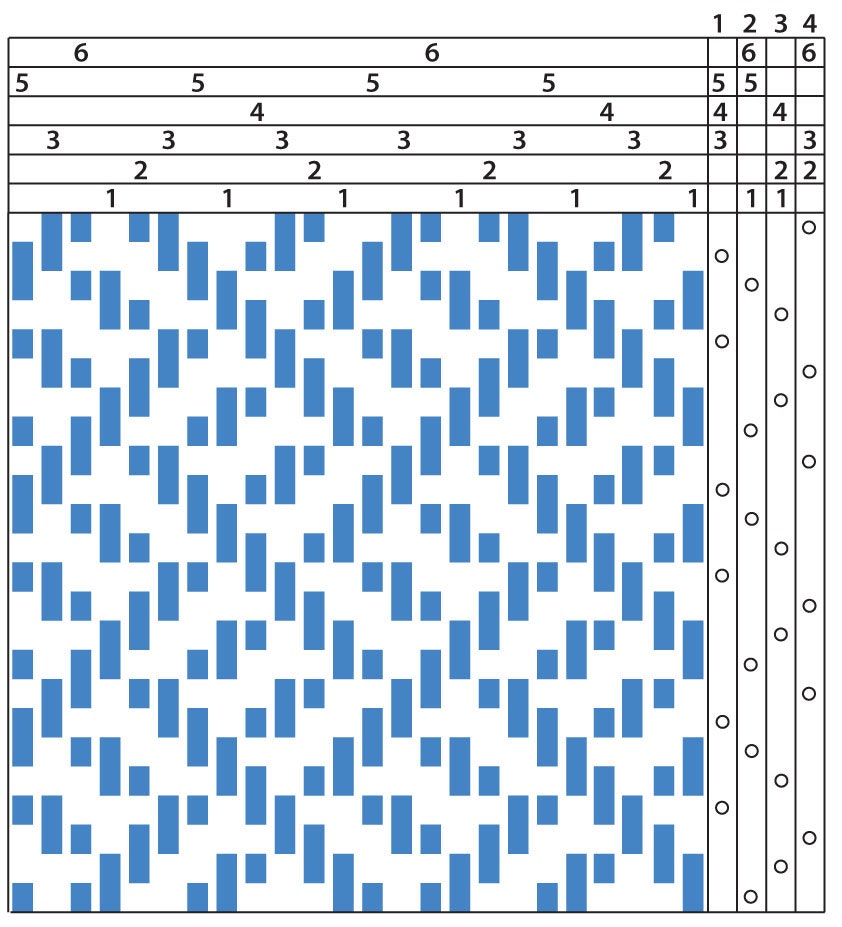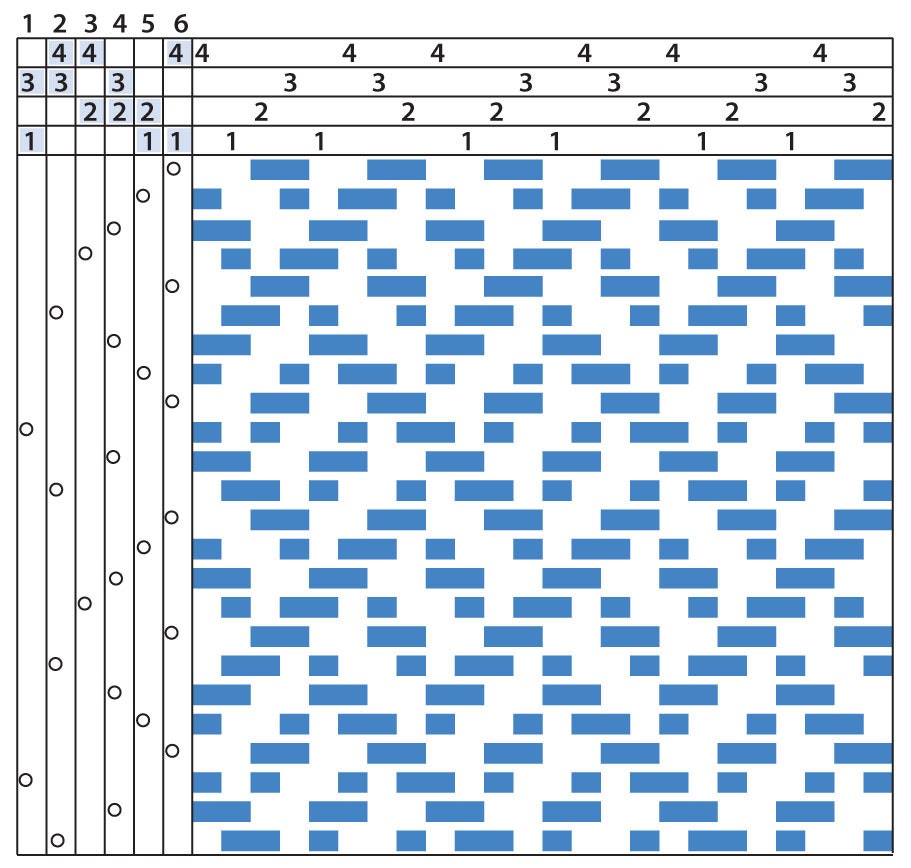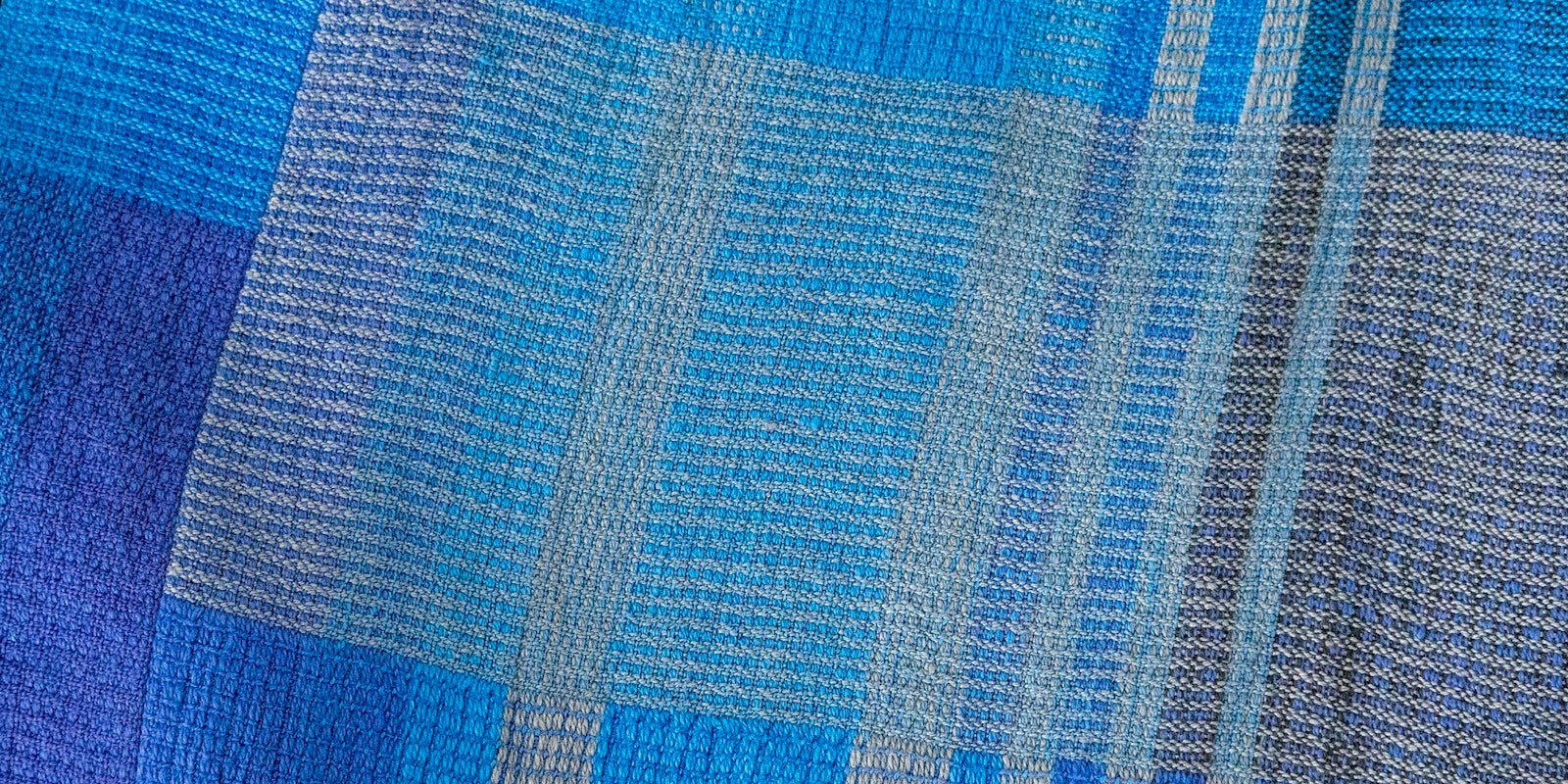Katzy Luhring and Cynthia Newman’s beautiful Blue Horizons Tunic, woven in turned summer and winter, appears in the Summer 2025 issue of Handwoven. Katzy and Cynthia also contributed an article about the structure and the process of designing their piece.
If you’re wondering about turning drafts in general, we think Madelyn van der Hoogt gives a great overview here of why and how to do it.
—Handwoven editors
Dear Madelyn,
Another terminology question. What’s a turned draft? I think I have a handle on this one, but some illustrations would not go amiss.
Thanks,
Linda

Hi Linda!
In most weaving literature, “turning” a draft means rotating the draft ninety degrees so that the threading becomes the treadling and vice versa. There are two main reasons to do this.
First, it exchanges the number of shafts or treadles required—for example, it turns a six-shaft, four-treadle weave into a four-shaft, six-treadle weave.
Second, it can turn a two-shuttle weave into a one-shuttle weave. (Ed. note: This is one major reason Katzy and Cynthia turned their summer and winter Blue Horizons Tunic draft. Their turned warp includes both the typical summer and winter pattern yarn and the tie-down yarn. Their weft requires only one shuttle to weave.)
Turning a draft is not difficult. Here’s how to go about it.
Steps for Turning a Draft

Figure 1. The original draft uses six shafts and four treadles.
Start with a draft, such as the one in Figure 1 (above). Rotate the draft 90° counterclockwise, so it looks like Figure 2 (below).
Figure 2. The entire draft is turned 90° counterclockwise.
Next, change the weft symbols from the original treadling into shaft numbers in the new threading. Then change the shaft numbers from the original threading to weft symbols in the new treadling. See Figure 3 (below).
Now for the final step: Rewrite the tie-up to place shaft numbers in the positions that were previously blank, and eliminate shaft numbers from the positions that were previously filled (compare the tie-ups in Figures 2 and 3).

Figure 3. Weft symbols in the original treadling are shaft numbers in the new threading, and shaft numbers in the original threading are weft symbols in the new treadling. The tie-up is inverted.
Ta-da! The warp threads in the original draft have become weft threads in the turned draft, and vice versa. A six-shaft draft using four treadles has become a four-shaft draft using six treadles.
Two final notes.
What if you don’t invert the tie-up? Will the turned draft still work? Yes, but you’ll be looking at the wrong side as you weave.
If your turned draft puts two different yarns in the warp, will that cause difficulties during weaving? Possibly, if the take-up is different for the two yarns—for instance, they aren’t the same grist, or they have different amounts of stretch. If you don’t have two warp beams on your loom to wind them separately, here are two options for weighting one of the warp yarns.
—Madelyn
Originally published Sept. 6, 2018; updated June 9, 2025


